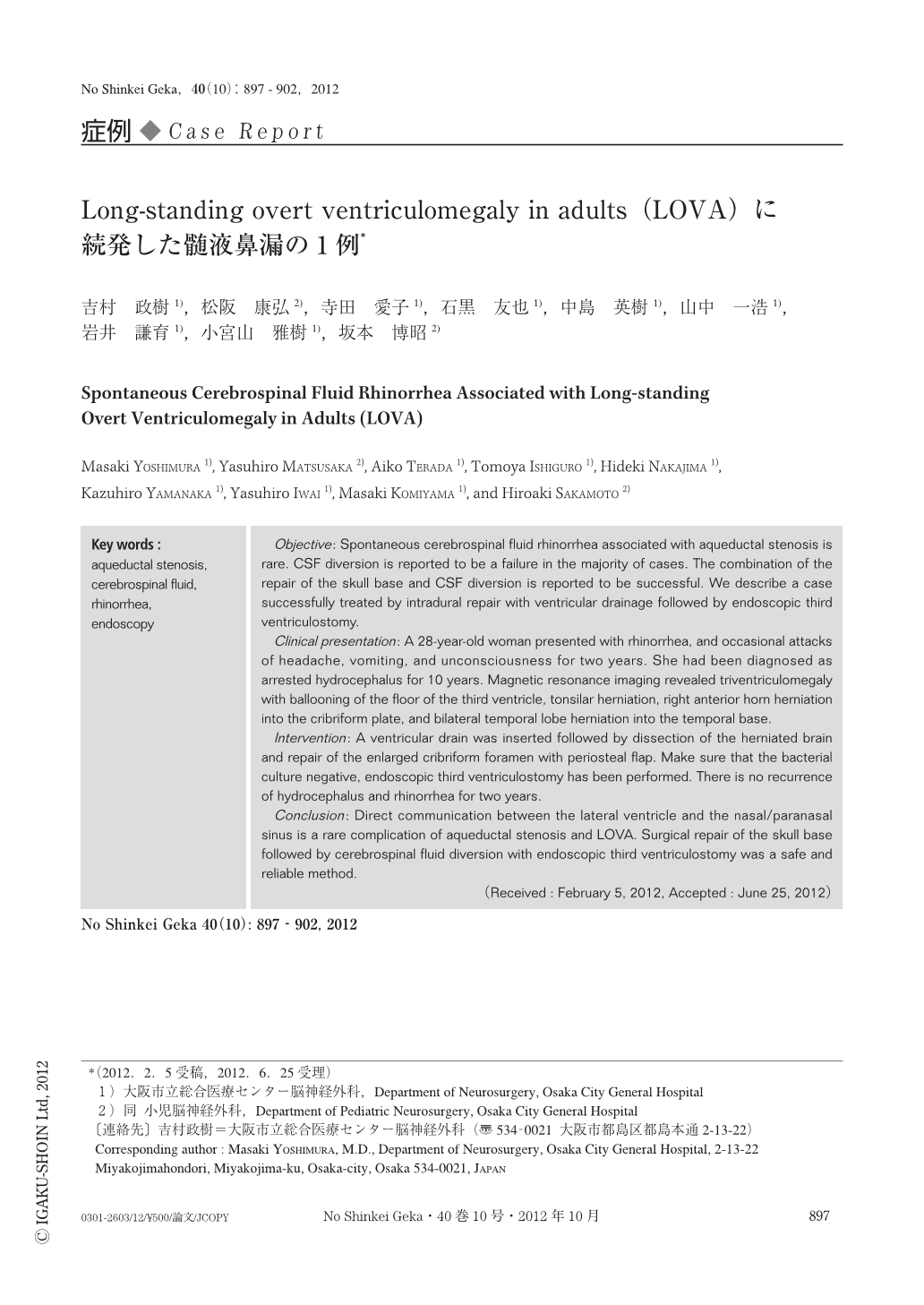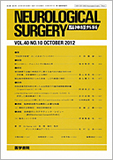Japanese
English
- 有料閲覧
- Abstract 文献概要
- 1ページ目 Look Inside
- 参考文献 Reference
Ⅰ.はじめに
中脳水道狭窄症による水頭症において,慢性の頭蓋内圧亢進によって頭蓋底部の骨・硬膜に菲薄化が生じ,髄液漏を来すことが稀にあるが1-8,11,13),髄液が漏れることにより頭蓋内圧が下がるため,頭蓋内圧亢進に対する代償機転として働き,発見が遅れるとされる.この病態に対する治療には種々の報告があるが,シャント手術だけでは術後に気脳症を来すことがあり3,4,6),髄液漏根治術を追加する場合が多い.今回われわれは,2年間にわたる髄液鼻漏を契機に発見された,long-standing overt ventriculomegaly in adults(LOVA)に伴う非外傷性髄液鼻漏の症例に対して,脳室ドレナージおよび髄液漏根治術を行った後に,内視鏡的第三脳室開窓術(endoscopic third ventriculostomy:ETV)を行い,良好な結果を得たので経過を報告する.
Objective: Spontaneous cerebrospinal fluid rhinorrhea associated with aqueductal stenosis is rare. CSF diversion is reported to be a failure in the majority of cases. The combination of the repair of the skull base and CSF diversion is reported to be successful. We describe a case successfully treated by intradural repair with ventricular drainage followed by endoscopic third ventriculostomy.
Clinical presentation: A 28-year-old woman presented with rhinorrhea, and occasional attacks of headache, vomiting, and unconsciousness for two years. She had been diagnosed as arrested hydrocephalus for 10 years. Magnetic resonance imaging revealed triventriculomegaly with ballooning of the floor of the third ventricle, tonsilar herniation, right anterior horn herniation into the cribriform plate, and bilateral temporal lobe herniation into the temporal base.
Intervention: A ventricular drain was inserted followed by dissection of the herniated brain and repair of the enlarged cribriform foramen with periosteal flap. Make sure that the bacterial culture negative, endoscopic third ventriculostomy has been performed. There is no recurrence of hydrocephalus and rhinorrhea for two years.
Conclusion: Direct communication between the lateral ventricle and the nasal/paranasal sinus is a rare complication of aqueductal stenosis and LOVA. Surgical repair of the skull base followed by cerebrospinal fluid diversion with endoscopic third ventriculostomy was a safe and reliable method.

Copyright © 2012, Igaku-Shoin Ltd. All rights reserved.


